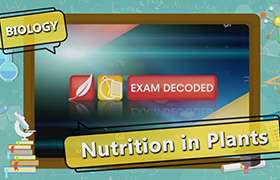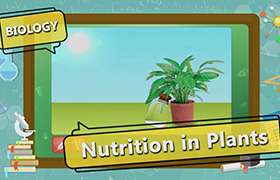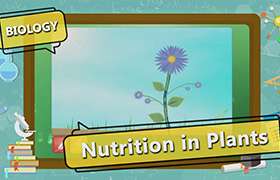CBSE Class 10 Answered
desert plant take up carbon dioxide at night and prepare an intermediate which is acted upon by the energy absorbed by the chlorophyll during day.Explain this line with extra information.
how is carbohyrates used in combustion ?
Asked by mkvinvestments6 | 07 Aug, 2015, 09:45: PM
- The desert plants which grow in semi-arid conditions fix atmospheric CO2 to form malic acid in the dark. These plants accumulate organic acid intermediate during the night to be used during the daytime. This pathway is called Crassulacean acid metabolism (CAM) and the plants which carry out crassulacean metabolism are termed CAM plants.
- The biochemical pathway of photosynthesis in CAM plants begins at night. At night, CO2 present in the atmosphere diffuses into the stomata of leaves and into mesophyll cells, where it is fixed by the C4 enzyme PEP carboxylase. The product is malate, but it is transformed into malic acid and is stored in the cell’s vacuoles until the next day.
- Although the malic acid will be used as a carbon dioxide source for the C3 cycle, it is stored until daylight because the C3 cycle requires light as an energy source. The vacuoles accumulate malic acid through most of the night.
- A few hours before daylight, the vacuole fills up, and malic acid begins to accumulate in the cytoplasm outside the vacuole. As it does, the pH of the cytoplasm becomes acidic, causing the enzyme to stop functioning for the rest of the night.
- When the sun rises the stomata closes, and photosynthesis by the C3 cycle quickly depletes the atmosphere within the leaf of all carbon dioxide. At this time, the malic acid is transported out of the vacuole to the cytoplasm of the cell. There it is broken down, and the carbon dioxide enters the chloroplast and is used by the C3 cycle; thus, photosynthesis is able to continue with closed stomata.
- Combustion occurs when any organic material is burnt in the presence of oxygen to give off products such as carbon dioxide and water along with the release of energy. In cells, combustion of carbohydrates occurs during respiration where glucose molecules are broken down in a stepwise manner to release carbon dioxide, water and energy in the form of ATP which is used by the body to perform various functions.
Answered by Sheetal Kolte | 09 Aug, 2015, 11:54: AM
Application Videos
Concept Videos
CBSE 10 - Biology
Asked by bgmigaurav7318 | 08 Apr, 2024, 01:46: PM
CBSE 10 - Biology
Asked by teacher_yourschool | 29 Apr, 2023, 01:57: PM
CBSE 10 - Biology
Asked by max12342732k | 06 Jan, 2023, 09:49: PM
CBSE 10 - Biology
Asked by topperlearningforcontent | 09 Jun, 2022, 01:14: PM
CBSE 10 - Biology
Asked by topperlearningforcontent | 09 Jun, 2022, 12:46: PM
CBSE 10 - Biology
Asked by priyankakiran2017 | 17 May, 2022, 09:00: PM
CBSE 10 - Biology
Asked by ashokkumartripathy | 09 May, 2022, 04:31: PM
CBSE 10 - Biology
Asked by salmansaud0121 | 15 Apr, 2022, 02:12: PM
CBSE 10 - Biology
Asked by sumanyadavyadav6789 | 15 Apr, 2022, 12:49: PM









